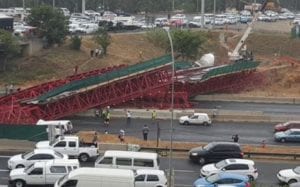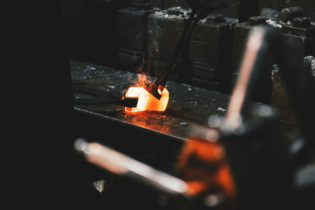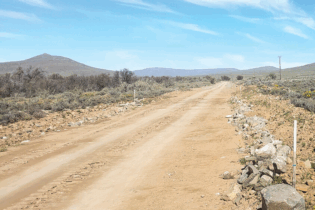Snowden took a swipe at social media reports that the concrete truck found on the scene of the accident was responsible for the collapse. He said the concrete structure on the western works had not moved for a considerable amount of time before the collapse. “Evidence from photos discount that notion as a red herring. It is quite clear that scaffolding fell on top of the truck, rather than truck hitting scaffolding.”
Wind together with structural weaknesses was responsible for the collapse of the temporary structures during construction work in the M1/Grayston Drive Pedestrian and cyclist structural bridge.
Construction firm Murray & Roberts’ expert witness Ric Snowden told the M1/Grayston Drive bridge collapse inquiry that “it is common cause that wind was a trigger of the collapse of the temporary structure.”
Snowden further said that the collapse to the Western direction was difficult to explain. He said the occurrence has become a subject of discussion among experts and that “there were other factors on the day responsible for the collapse to the Western side”.
According to Snowden, measurements on the day showed that six minutes before the collapse there was a high wind speed of 10.1 m per second, which he described as normal. The wind was blowing in a north easterly direction.
Snowden dismissed media reports made after the accident that missing bolts contributed to the collapse of the structure. “We have investigated that aspect and found it to be untrue,” he said.








